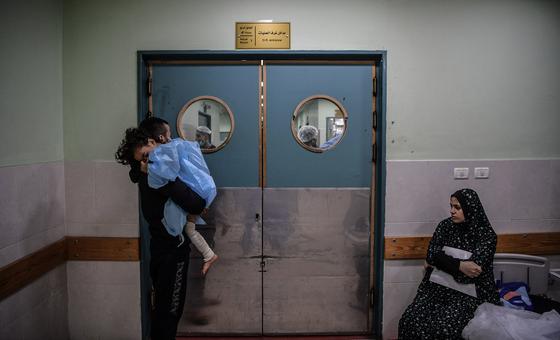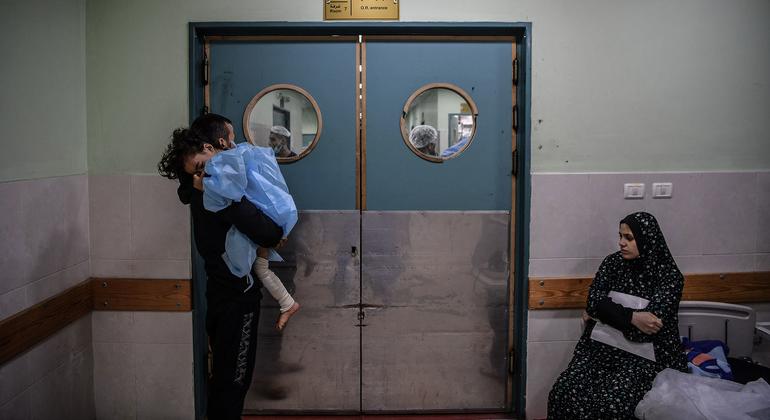
A total of 645 people have died since 7 October and another 818 were injured as a result of these incidents, said WHO spokesperson Tarik Jasarevic, his comments coming amid allegations that a nurse was shot and critically injured while inside an operating theatre at a hospital in Khan Younis.
“These attacks have affected 98 healthcare facilities including 27 hospitals damaged out of 36 and affected 90 ambulances, including 50 which sustained damage,” Mr. Jasarevic told journalists in Geneva.
Driven out
In its latest update on the crisis, the UN aid coordination office, OCHA, reported more “intense fighting” in Khan Younis in southern Gaza on Thursday involving shelling and heavy gunfire.
Citing UN partner the Palestinian Red Crescent Society (PCRS), the UN aid coordination office said that Nasser hospital and Al Amal hospital – reportedly under siege for 17 days – had continued to be particularly badly affected by the violence which “is driving thousands of people” from the city further south, to Rafah.
Hospital focus
The OCHA update also relayed reports from the Gazan health authority of continuing “allegations of sniper shooting in the vicinity of Nasser hospital” and allegations that the Israeli military had prevented the movement of ambulances and access to Nasser hospital.
“On 8 February, a nurse was reportedly shot and critically injured while inside the operations room in Nasser hospital and two Palestinians were reportedly shot and killed in the vicinity of the hospital,” the OCHA update said. “On 7 February, a Palestinian woman was reportedly shot and killed while purportedly fetching water from Nasser hospital.”
West Bank escalation
Latest WHO data also highlighted the growing number of attacks on healthcare in the occupied West Bank since the Gaza-Israel war erupted on 7 October, after widely condemned Hamas-led terror attacks left 1,200 Israeli and foreign nationals butchered and more than 250 taken hostage.
Some 364 attacks (on healthcare) have happened in the West Bank, resulting in 10 fatalities and 62 injuries, Mr. Jasarevic said. He noted that 44 health facilities had been affected, including 15 mobile clinics and 24 ambulances.
The latest toll from the fighting in Gaza is at least 27,840 fatalities with more than 67,300 injured, according to the local health authority. As of 8 February, 225 Israeli soldiers have been killed with 1,314 injured in Gaza since the beginning of the ground operation, according to the Israeli military.
Renewed famine fears
UN humanitarians continued to highlight that the risk of famine in Gaza is increasing “by the day”, particularly in northern Gaza.
Hundreds of thousands of people there have been “predominantly cut off from assistance”, OCHA said, despite the fact that this is where the greatest needs are, with many reportedly grinding animal feed to make flour.
Since the onset of the crisis, the UN World Food Programme (WFP) has delivered 1,940 trucks – 19 per cent of all aid trucks, it said – carrying over 32,413 tons of life-saving food supplies.
The last time the UN agency for Palestinian refugees, UNRWA, was able to carry out a food distribution in the north of Wadi Gaza was 23 January, OCHA’s update noted.



